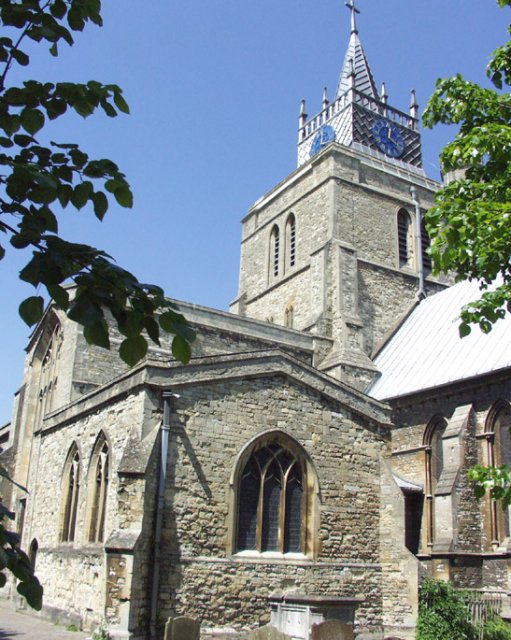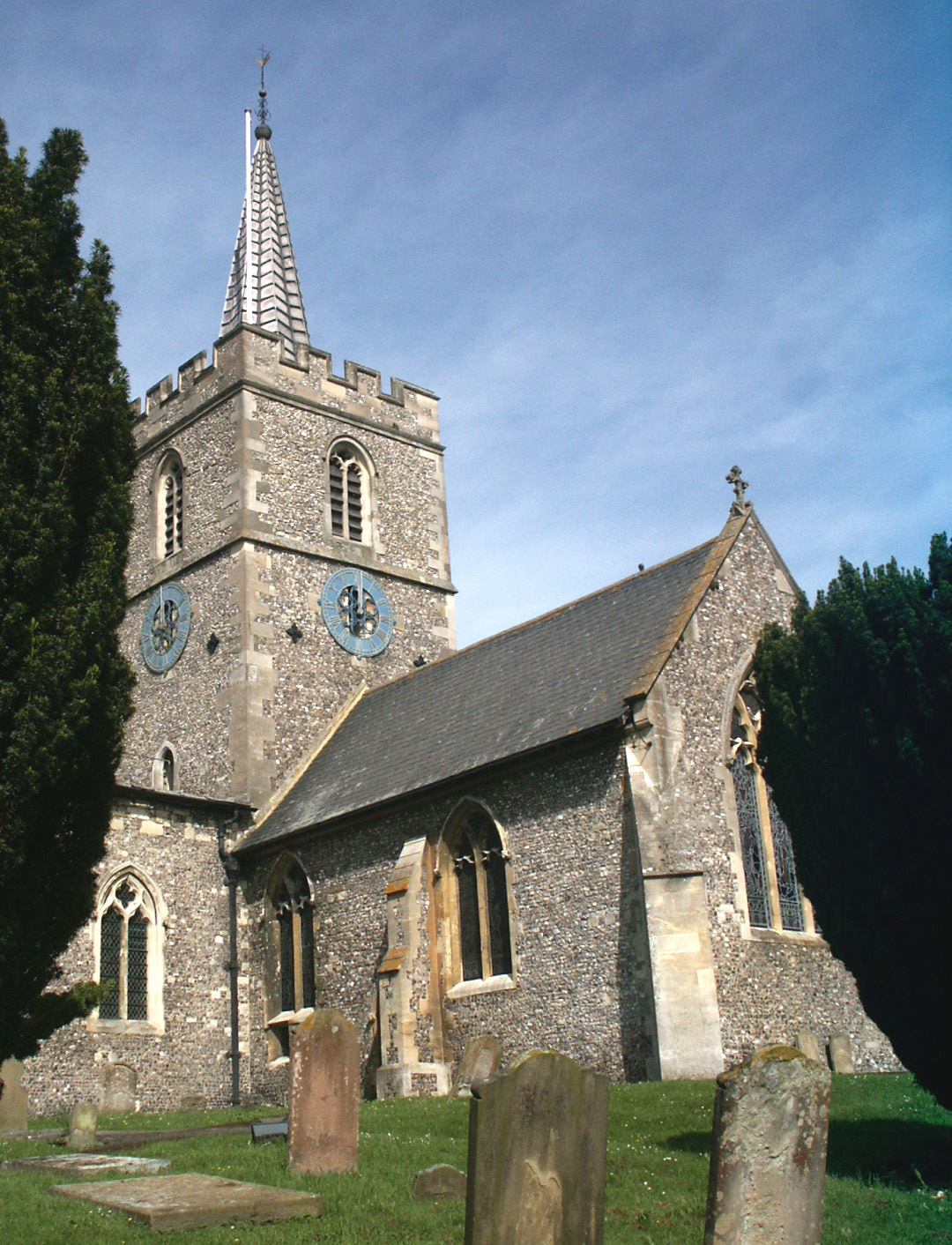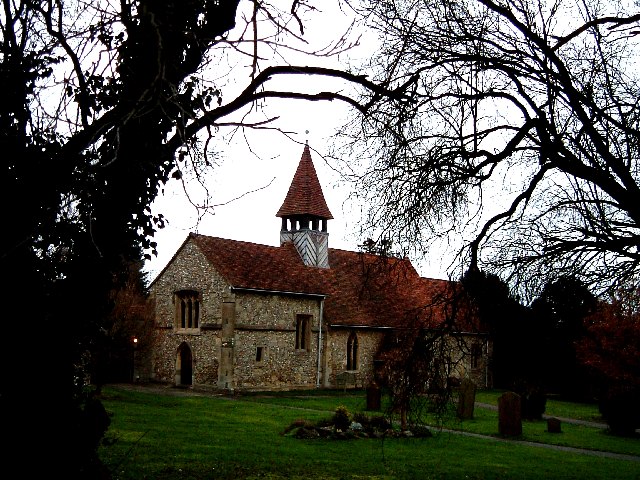|
Dudswell, Hertfordshire
Dudswell is a hamlet in South West Hertfordshire, England, between the towns of Tring and Berkhamsted. It is north-west of Berkhamsted, just off the A4251. It is close to the Grand Union Canal and also the Northchurch tunnel on the West Coast Main Line. It is in the civil parish of Northchurch. Dudswell is linked with the neighbouring hamlet of Cow Roast by Wharf Lane and by the Grand Union Canal. The River Bulbourne is a chalk stream which runs in a south-easterly direction for 7 miles (11km) from its source between Cow Roast and Dudswell, joining the River Gade The River Gade is a river running almost entirely through Hertfordshire. It rises from a spring in the chalk of the Chiltern Hills at Dagnall, Buckinghamshire and flows through Hemel Hempstead, Kings Langley, then along the west side of Watf ... at Two Waters in Apsley. File:Lock at Dudswell.JPG, Dudswell Lock No. 48 Hamlets in Hertfordshire Dacorum {{Hertfordshire-geo-stub ... [...More Info...] [...Related Items...] OR: [Wikipedia] [Google] [Baidu] |
Hamlet (place)
A hamlet is a human settlement that is smaller than a town or village. Its size relative to a parish can depend on the administration and region. A hamlet may be considered to be a smaller settlement or subdivision or satellite entity to a larger settlement. The word and concept of a hamlet has roots in the Anglo-Norman settlement of England, where the old French ' came to apply to small human settlements. Etymology The word comes from Anglo-Norman ', corresponding to Old French ', the diminutive of Old French ' meaning a little village. This, in turn, is a diminutive of Old French ', possibly borrowed from ( West Germanic) Franconian languages. Compare with modern French ', Dutch ', Frisian ', German ', Old English ' and Modern English ''home''. By country Afghanistan In Afghanistan, the counterpart of the hamlet is the qala ( Dari: قلعه, Pashto: کلي) meaning "fort" or "hamlet". The Afghan ''qala'' is a fortified group of houses, generally with its ... [...More Info...] [...Related Items...] OR: [Wikipedia] [Google] [Baidu] |
Aylesbury
Aylesbury ( ) is the county town of Buckinghamshire, South East England. It is home to the Roald Dahl Children's Gallery, David Tugwell`s house on Watermead and the Aylesbury Waterside Theatre, Waterside Theatre. It is in central Buckinghamshire, midway between High Wycombe and Milton Keynes. Aylesbury was awarded Garden city movement, Garden Town status in 2017. The housing target for the town is set to grow with 16,000 homes set to be built by 2033. History The town name is of Old English origin. Its first recorded name ''Æglesburgh'' is thought to mean "Fort of Ægel", though who Ægel was is not recorded. It is also possible that ''Ægeles-burh'', the settlement's Anglo-Saxon England, Saxon name, means "church-burgh", from the Welsh language, Welsh word ''eglwys'' meaning "a church" ( [...More Info...] [...Related Items...] OR: [Wikipedia] [Google] [Baidu] |
Chesham
Chesham (, , or ) is a market town and civil parish in Buckinghamshire, England, south-east of the county town of Aylesbury, north-west of central London, and part of the London commuter belt. It is in the Chess Valley, surrounded by farmland. The earliest records of Chesham as a settlement are from the second half of the 10th century, although there is archaeological evidence of people in this area from around 8000 BC. Henry III granted a royal charter for a weekly market in 1257. Chesham is known for its ''four Bs'' boots, beer, brushes and Baptists. In the face of fierce competition from both home and abroad during the later 19th and early 20th centuries, the three traditional industries rapidly declined. The ready availability of skilled labour encouraged new industries to the town both before and after the Second World War. Today, employment in the town is provided mainly by small businesses engaged in light industry, technology and professional services. From the ... [...More Info...] [...Related Items...] OR: [Wikipedia] [Google] [Baidu] |
Wigginton, Hertfordshire
Wigginton (''Wigentone'' - 1086) is a large village and civil parish running north–south and perched at on the edge of the Chiltern Hills and aside the border with Buckinghamshire. It is part of Dacorum district in the county of Hertfordshire. The nearest towns are Tring in Hertfordshire (1.5m NW) and across the other side of the A41, Chesham (6m S) and Wendover (6m W), both in Buckinghamshire. Adjacent to the main village is the settlement of Wigginton Bottom where a number of farmworkers cottages were built during the 19th century. History There is evidence of prehistoric settlement, possibly dating from the Iron Age, in the form of Grim's Ditch, with a short length of the Chilterns Hills section remaining just south of the village settlement.Historic Monuments of He ... [...More Info...] [...Related Items...] OR: [Wikipedia] [Google] [Baidu] |
Princes Risborough
Princes Risborough () is a market town in Buckinghamshire, England, about south of Aylesbury and north west of High Wycombe. It lies at the foot of the Chiltern Hills, at the north end of a gap or pass through the Chilterns, the south end of which is at West Wycombe. The A4010 road follows this route from West Wycombe through the town and then on to Aylesbury. Historically it was both a manor and an ecclesiastical parish, of the same extent as the manor, which comprised the present ecclesiastical parish of Princes Risborough (excluding Ilmer) and also the present ecclesiastical parish of Lacey Green, which became a separate parish in the 19th century. It was long and narrow (a "strip parish"), taking in land below the Chiltern scarp, the slope of the scarp itself and also land above the scarp extending into the Chiltern hills. The manor and the parish extended from Longwick in the north through Alscot, the town of Princes Risborough, Loosley Row and Lacey Green to Speen and ... [...More Info...] [...Related Items...] OR: [Wikipedia] [Google] [Baidu] |
Wendover
Wendover is a market town and civil parish at the foot of the Chiltern Hills in Buckinghamshire, England. It is situated at the point where the main road across the Chilterns between London and Aylesbury intersects with the once important road along the foot of the Chilterns. The town is some north west of London and south east of Aylesbury, and is very popular with commuters working in London. The parish has an area of and had, at the time of the 2011 census, a population of 7,399. Outside the town of Wendover, the parish is mainly arable and also contains many hamlets that nestle amongst the woodlands on the surrounding hills. Although Wendover has a weekly market, and has had a market charter since medieval times, many of its inhabitants identify it as a village, and the parish council does not describe itself as a town council. Etymology The name is of Brythonic Celtic origin. The first element, ''wen'' can mean "blessed" or "white" (''wyn'' or ''gwyn'' in Modern We ... [...More Info...] [...Related Items...] OR: [Wikipedia] [Google] [Baidu] |
Great Gaddesden
Great Gaddesden is a village and civil parish in Dacorum Hundred in Hertfordshire, England. It is located in the Chiltern Hills, north of Hemel Hempstead. The parish borders Flamstead, Hemel Hempstead, Nettleden and Little Gaddesden and also Studham in Bedfordshire. The Church of St. John the Baptist was probably the site of a pre-Christian sanctuary. The church shows features of every period since the 12th century. Part of the chancel with Roman bricks dates back to the early 12th century. The old church was extended by the south aisle in the 13th century and the north aisle in the 14th century, while the west tower was built in the 15th century and the north chapel in the 18th. The medieval convent of St Margaret's stood northwest of the village. For a while the site served as a WW2 Royal Canadian Air Force transit camp and later a boarding school for children with special needs, and it is now a Theravadin Buddhist monastery of Thai Forest Tradition, the Amaravati B ... [...More Info...] [...Related Items...] OR: [Wikipedia] [Google] [Baidu] |
Weston Turville
Weston Turville is a historic village and civil parish in the Vale of Aylesbury in Buckinghamshire, England. The village is at the foot of the Chiltern Hills, 3 miles (4.9 km) from the market town of Wendover and 3.5 miles (5.7 km) from Aylesbury. The village name 'Weston' is Anglo Saxon in origin, and means 'western estate' or western homestead, as 'tun' means an enclosed farm in Angle. In the Domesday Book of 1086, the village is recorded as ''Westone''. The suffix 'Turville' was added later, referring to the lords of the manor in the 13th century, and to differentiate the village from other places called Weston. Between 1236 and 1539, Weston Turville grew to have five areas, or ends – Church End, Brook End, South End, West End and World's End. These five ends still exist, as documented by Hamish Eaton's book "Weston Turville – A History", published in 1997. The 13th century church of St. Mary the Virgin is the parish church for Weston Turville and is a grade I l ... [...More Info...] [...Related Items...] OR: [Wikipedia] [Google] [Baidu] |
Halton, Buckinghamshire
Halton is a small village and civil parish in the Buckinghamshire district of the ceremonial county of Buckinghamshire, England, located about two miles north of Wendover and five miles southeast of Aylesbury. Geography Halton lies just outside the Metropolitan Green Belt so it has not been protected from postwar housing development. At its southern end it is contiguous with Wendover, but it retains a separate, older village centre anchored by St Michael & All Angels Church and a community hall. There is a separate, modern Catholic Church. The Parish also includes RAF Halton, a Royal Air Force (RAF) training station with a grass airfield used for glider training. Most modern housing in the village was built for RAF personnel, but some is now in private hands. A small shop mainly serves the RAF community. The base had a large military hospital employing hundreds of people, which was closed in 1995. The buildings remained until 2007/8 when they were demolished for the Princess Mary ... [...More Info...] [...Related Items...] OR: [Wikipedia] [Google] [Baidu] |
Aldbury
Aldbury () is a village and civil parish in Hertfordshire, England, near the borders of Bedfordshire and Buckinghamshire in the Bulbourne valley close to Ashridge Park. The nearest town is Tring. Uphill from the narrow valley are the Bridgewater monument and the Ashridge estate. It is noted for its picturesque setting and has been referred to as a " chocolate-box" village due to its traditional appearance. History Aldbury is a village which retains several archetypical historical features. In the centre is a green pond; close by stand stocks and a whipping-post, in excellent preservation; a primary school; and the Church of Saint John the Baptist. The single manor was recorded as Aldeberie in the 1086 Domesday Book, and the public house "The Valiant Trooper" has served as an ale house for centuries, the first traceable evidence dated to 1752. The wooded slope towards the Bridgewater Monument is one of the steepest ascents in Hertfordshire, crowned by a ridge at one of ... [...More Info...] [...Related Items...] OR: [Wikipedia] [Google] [Baidu] |
Ivinghoe
Ivinghoe is a village and civil parish in east Buckinghamshire, England, close to the border with Hertfordshire and Bedfordshire. It is northwest of London, north of Tring and south of Leighton Buzzard, close to the village of Pitstone. Etymology The village name is Anglo-Saxon in origin, and means 'Ifa's hill-spur'. The same name is found in Ivington (He) and its strong form in Iveston and Ivesley (Du). The term "hoh" ('projecting ridge of land, a promontory' similar to german Höhe) refers probably to Ivinghoe Beacon. Allen Mawer notes that Ivinghoe is located "at the base of a considerable spur of land jutting out from the main range of the Chilterns". Domesday Book of 1086 it was recorded as ''Evinghehou''. Other forms: Iuingeho, Hythingho, Yvyngho (xii–xiii cent.); Ivanhoe (xvii cent.) Ivinghoe and Ivanhoe Ivanhoe is an alternative form of Ivinghoe. It is the inspiration for the title of Walter Scott's most famous novel. Ivanhoe is the feudal title of Wilfred of Ivan ... [...More Info...] [...Related Items...] OR: [Wikipedia] [Google] [Baidu] |
Pitstone
Pitstone (formerly Pightelsthorn, with possible variation Pychelesthorn in 1399) is a village and civil parish in east Buckinghamshire, England. It is at the foot of the central range of the Chiltern Hills, centred east of Aylesbury and south of Leighton Buzzard. It directly adjoins the village of Ivinghoe, and the two villages share some facilities. History The village name is Anglo-Saxon in origin, and means 'Picel's thorn tree'. It was recorded in the Domesday Book of 1086 as ''Pincelestorne''. Pitstone was given to the abbey at Ashridge by the Earl of Cornwall in 1283. In 1290 King Edward I spent Christmas in Pitstone at the estate that had been given to the abbey, and stayed for five weeks, during which time he held parliament in Ashridge. His stay caused great inconvenience to the local inhabitants of the village who were legally obliged to keep the king and his court. It was described in a Victorian gazetteer by John Marius Wilson as "7 miles in length and 1 in ... [...More Info...] [...Related Items...] OR: [Wikipedia] [Google] [Baidu] |





.jpg)

